Tourist Attractions in India: India is a land of endless wonders, filled with rich culture, ancient history, deep spirituality, and breathtaking natural beauty. Every state and city has its own unique story to share, and the country’s diverse landscape offers something for everyone. From snow-capped mountains to tropical beaches, India has it all. Whether you’re interested in exploring ancient ruins, immersing yourself in local traditions, or simply marveling at nature’s beauty, India has a wealth of tourist attractions to offer. This guide will introduce you to some of the most iconic destinations across different regions of India.
- 1. The Taj Mahal (Agra, Uttar Pradesh)
- 2. The Golden Temple (Amritsar, Punjab)
- 3. Jaipur’s Amber Fort (Rajasthan)
- 4. Backwaters of Kerala (Alleppey and Kumarakom)
- 5. The Red Fort (Delhi)
- 6. Varanasi Ghats (Uttar Pradesh)
- 7. Meenakshi Temple (Madurai, Tamil Nadu)
- 8. Ranthambore National Park (Rajasthan)
- 9. Hampi (Karnataka)
- 10. Goa Beaches
- 11. Ajanta and Ellora Caves (Maharashtra)
- 12. Udaipur City Palace (Rajasthan)
- 13. Leh-Ladakh (Jammu & Kashmir)
- 14. Khajuraho Temples (Madhya Pradesh)
- 15. Rishikesh (Uttarakhand)
- Conclusion
- FAQs
1. The Taj Mahal (Agra, Uttar Pradesh)
Why Visit the Taj Mahal?
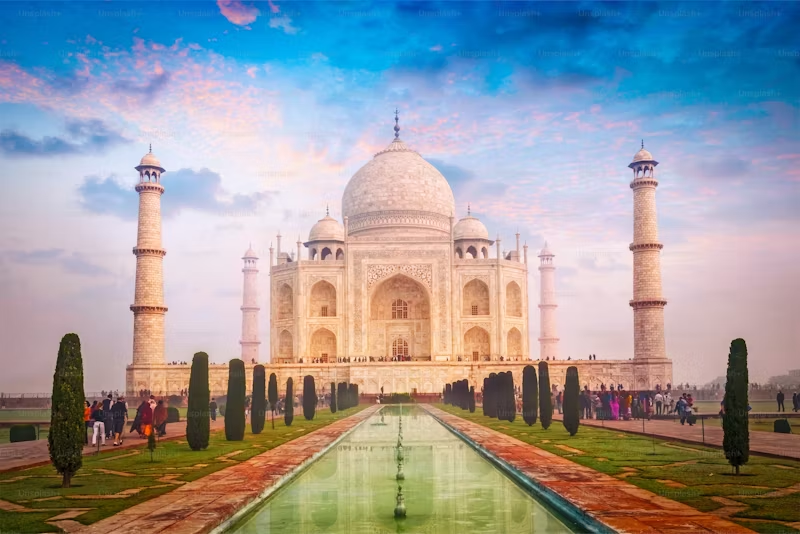
The Taj Mahal is a stunning white marble mausoleum located in Agra, India. It’s a UNESCO World Heritage Site and one of the most famous landmarks in the world. Emperor Shah Jahan built it as a tomb for his beloved wife, Mumtaz Mahal. The Taj Mahal is a symbol of eternal love and a masterpiece of architecture.
Key Highlights:
- Intricate inlay work and the majestic central dome of the mausoleum
- Serene Charbagh gardens and reflecting pools
- Ideal viewing times: Sunrise or sunset for the most stunning visuals
Best Time to Visit:
- October to March offers pleasant weather and optimal lighting for capturing the beauty of the monument.
2. The Golden Temple (Amritsar, Punjab)
Why Visit the Golden Temple?
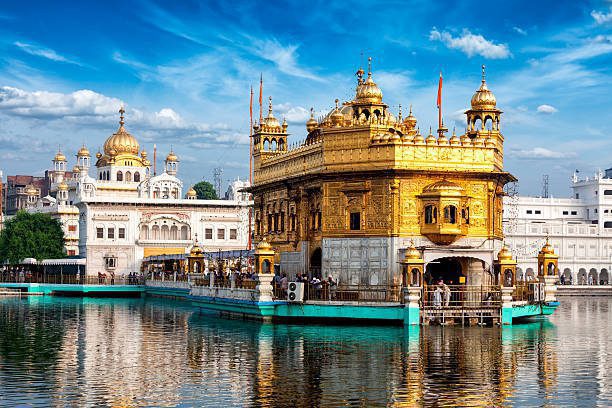
The Golden Temple, also known as Harmandir Sahib, is a very special place for Sikhs. It’s a beautiful building covered in gold, and it sits on a pool called Amrit Sarovar. When the building reflects in the water, it looks amazing.
Key Highlights:
- The resplendent golden-covered central shrine
- The Langar Hall, offering free meals to thousands daily
- Participate in the sacred Palki Sahib ceremony at night
Best Time to Visit:
- November to March offers comfortable weather, though the site is open year-round.
3. Jaipur’s Amber Fort (Rajasthan)
Why Visit Amber Fort?
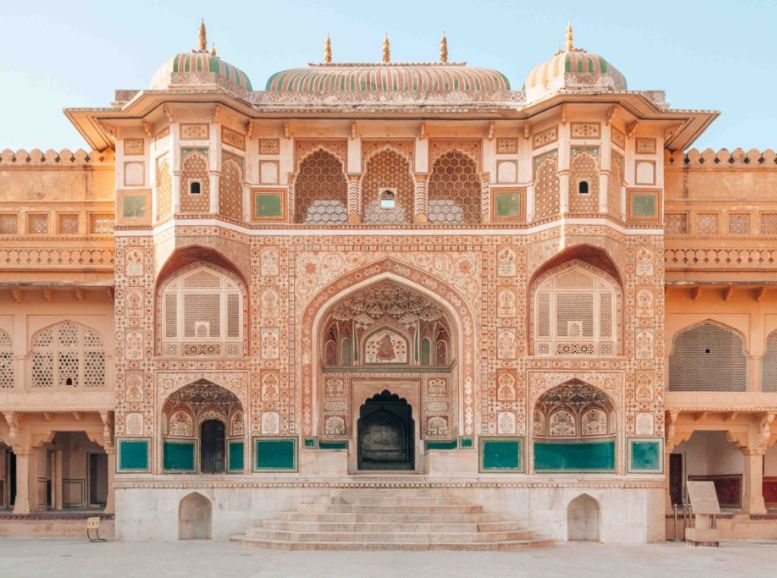
The Amber Fort is a beautiful castle built on a hilltop overlooking Maota Lake in Rajasthan. It’s a great example of Rajput and Mughal architecture and is one of the most popular tourist destinations in the state. Many people visit Amber Fort to learn about its history, see the stunning architecture, and enjoy the beautiful views.
Key Highlights:
- The stunning Sheesh Mahal (Mirror Palace)
- The grand courtyard and elephant rides to the fort
- Panoramic views of Jaipur from the fort’s ramparts
Best Time to Visit:
- October to March offers cooler temperatures and clearer skies for optimal enjoyment.
4. Backwaters of Kerala (Alleppey and Kumarakom)
Why Visit the Backwaters?
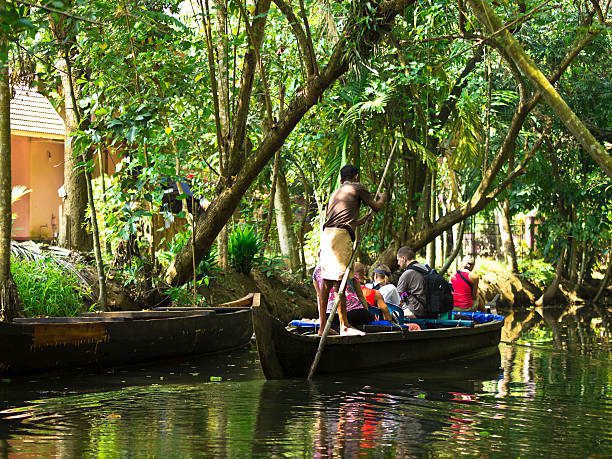
The backwaters of Kerala are a peaceful and relaxing place to visit. You can take a traditional houseboat and float along the serene canals. The waterways are surrounded by beautiful palm trees and rice fields, and they offer a glimpse into the culture of Kerala.
Key Highlights:
- Scenic houseboat cruises with delicious local cuisine
- Picturesque villages along the backwaters
- Bird watching at the Kumarakom Bird Sanctuary
Best Time to Visit:
- November to February offers ideal weather for houseboat cruises.
5. The Red Fort (Delhi)
Why Visit the Red Fort?
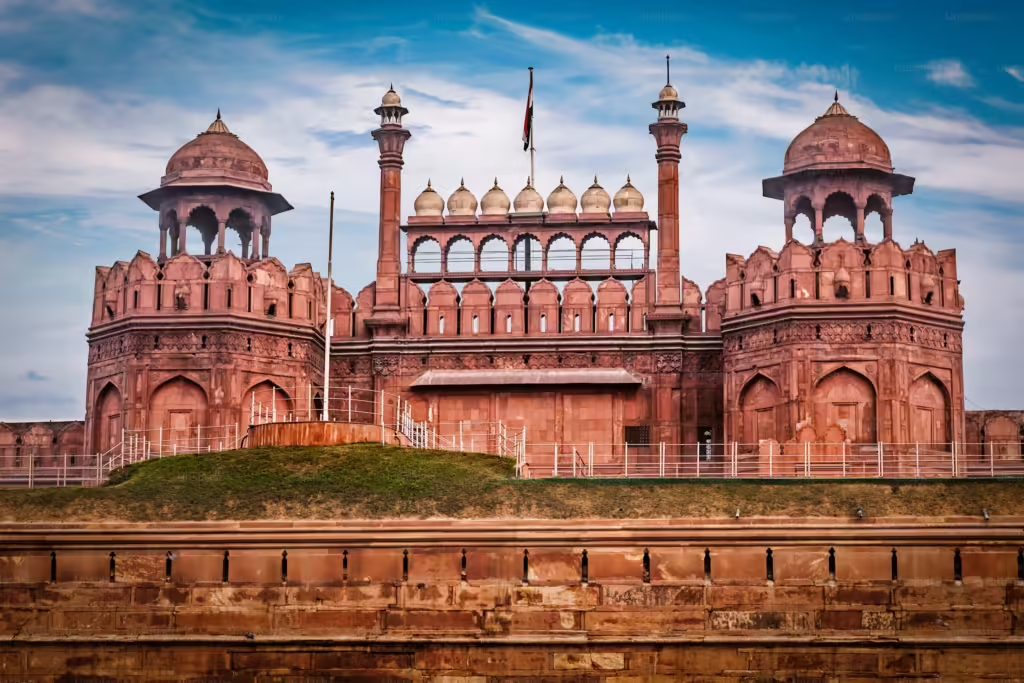
The Red Fort is a huge red sandstone fort built by Mughal Emperor Shah Jahan. It is a symbol of India’s history and shows how powerful and wealthy the Mughals were. The fort has beautiful carvings and grand halls.
Key Highlights:
- The iconic Lahore Gate, the fort’s main entrance
- The Diwan-i-Aam and Diwan-i-Khas, halls for public and private audiences
- The captivating evening sound and light show that narrates the fort’s history
Best Time to Visit:
- October to March offers pleasant weather and avoids Delhi’s summer heat.
6. Varanasi Ghats (Uttar Pradesh)
Why Visit Varanasi?
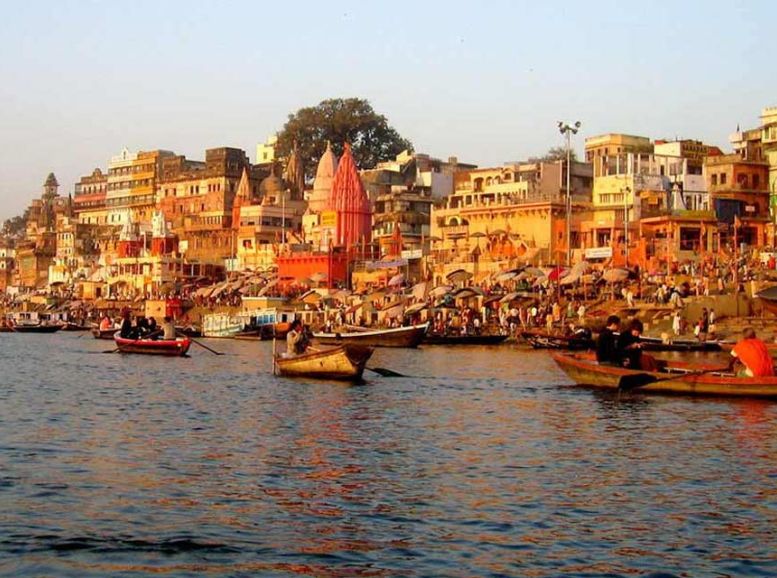
Varanasi is one of the oldest cities in the world and a very special place for Hindus. It’s known as the spiritual heart of India. The ghats, which are steps leading down to the Ganges River, are always busy with people doing rituals, praying, and taking part in ceremonies. These activities help people feel connected to Hindu traditions.
Key Highlights:
- Dawn boat ride on the Ganges River
- Witness the daily Ganga Aarti at Dashashwamedh Ghat
- Visit the sacred Kashi Vishwanath Temple
Best Time to Visit:
- October to March offers cooler temperatures for a comfortable experience.
7. Meenakshi Temple (Madurai, Tamil Nadu)
Why Visit Meenakshi Temple?
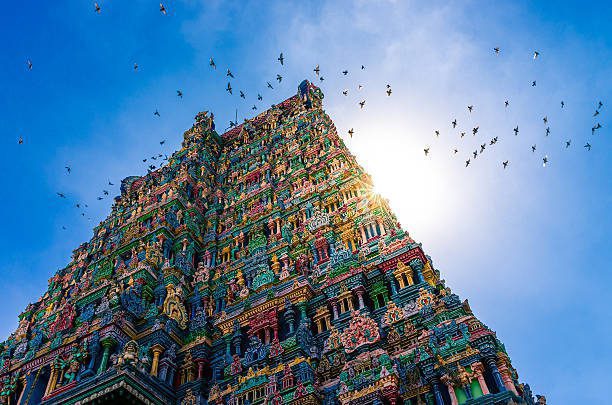
The Meenakshi Temple in Madurai is a beautiful and impressive building with tall towers called gopurams. The gopurams are covered in thousands of colorful figures. The temple is a very important place for Hindus to visit, and it’s a great example of Dravidian architecture.
Key Highlights:
- Intricate carvings and sculptures on the temple gopurams
- The stunning Hall of Thousand Pillars
- Experience the vibrant Meenakshi Thirukalyanam festival
Best Time to Visit:
- October to March offers pleasant weather and avoids the summer heat.
8. Ranthambore National Park (Rajasthan)
Why Visit Ranthambore?
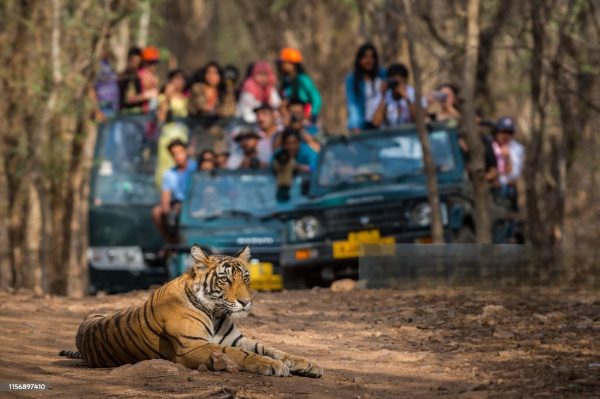
Ranthambore National Park is a great place to go if you love wildlife. It’s one of the best places in India to see a Bengal tiger in its natural habitat. You might also see leopards, crocodiles, and many different kinds of birds.
Key Highlights:
- Thrilling tiger safaris in open jeeps
- Explore the historic Ranthambore Fort
- Spot other wildlife like deer, sloth bears, and birds
Best Time to Visit:
- October to April is ideal, with March to June offering the best chances of seeing tigers.
9. Hampi (Karnataka)
Why Visit Hampi?
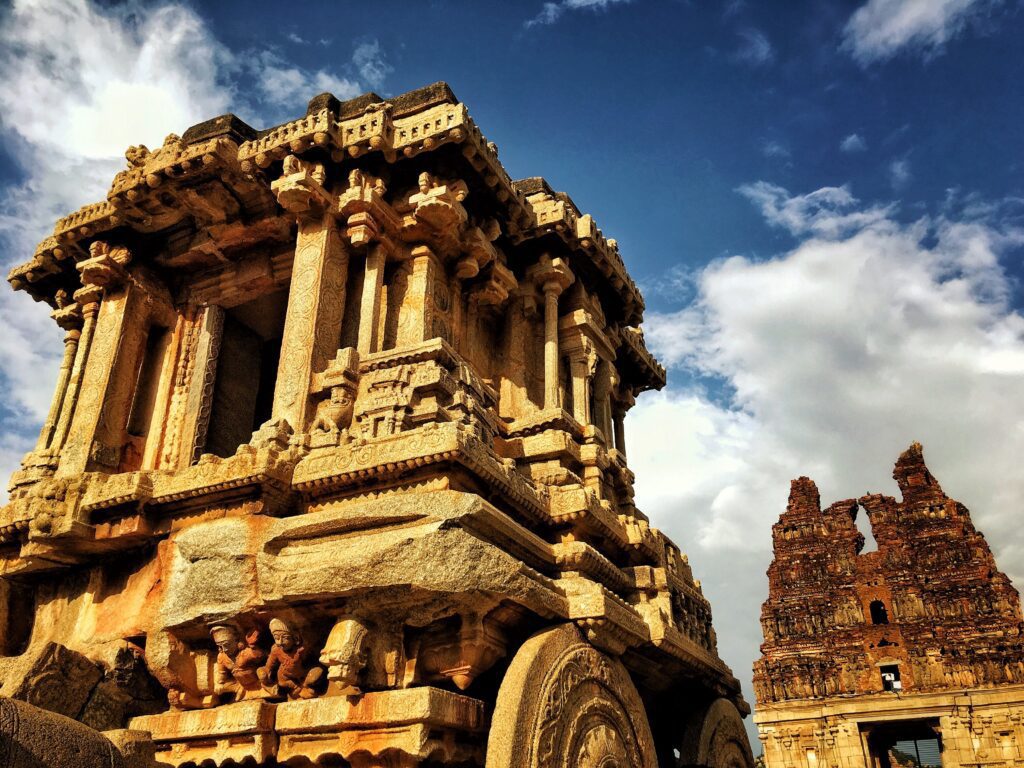
Hampi is an ancient city that’s been declared a UNESCO World Heritage Site. It’s full of ruins from the Vijayanagara Empire. The place looks like something out of this world, with big rocks and old temples everywhere. It’s one of the most special historical places in India.
Key Highlights:
- The active Virupaksha Temple
- The Vittala Temple with its famous stone chariot
- Rock climbing and bouldering adventures
Best Time to Visit:
- October to March offers cooler weather for exploring the ruins comfortably.
10. Goa Beaches
Why Visit Goa?
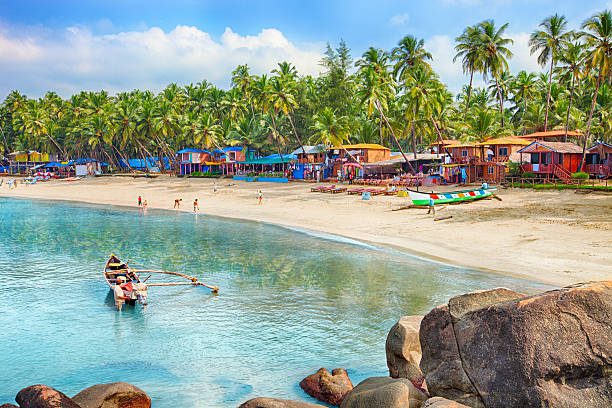
Goa is a beautiful place in India known for its clean beaches, relaxed atmosphere, and exciting nightlife. Whether you want to relax on the beach or learn about Goa’s Portuguese history, this tropical destination has something for everyone.
Key Highlights:
- Vibrant Baga Beach with its lively nightlife
- Serene Palolem Beach for a peaceful escape
- Explore the historic Basilica of Bom Jesus and Se Cathedral
Best Time to Visit:
- November to February offers ideal weather for beach activities and exploration.
11. Ajanta and Ellora Caves (Maharashtra)
Why Visit Ajanta and Ellora Caves?
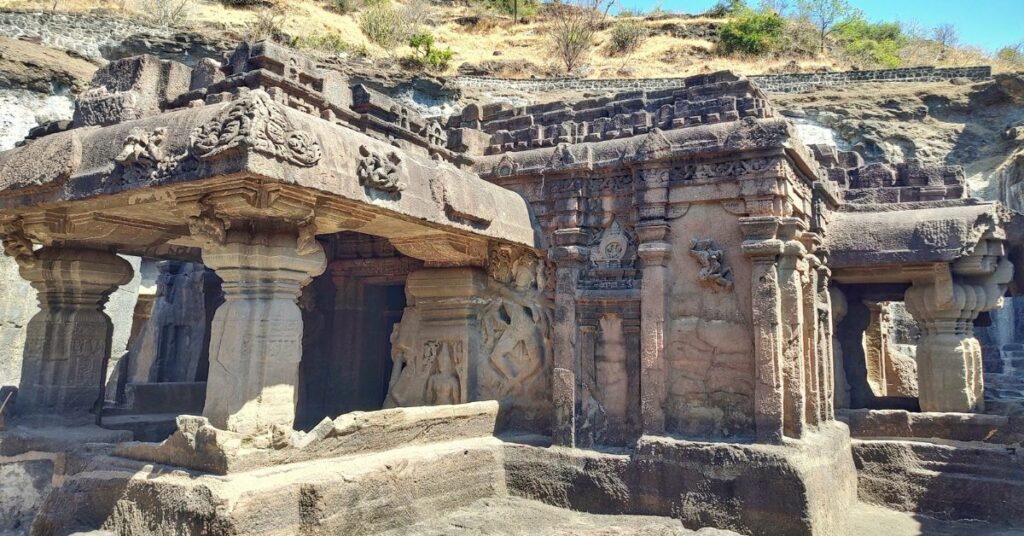
The Ajanta and Ellora Caves are amazing historical places in India. They’re made by cutting into rocks and are decorated with beautiful carvings and paintings. These caves show the art and architecture of ancient India and have influences from Buddhist, Hindu, and Jain religions.
Key Highlights:
- The awe-inspiring Kailasa Temple, carved from a single rock
- The breathtaking murals inside the Ajanta Caves
- Delve into ancient Indian history and religion
Best Time to Visit:
- November to March offers cooler temperatures for comfortable exploration.
12. Udaipur City Palace (Rajasthan)
Why Visit Udaipur City Palace for Tourist Attractions in India?
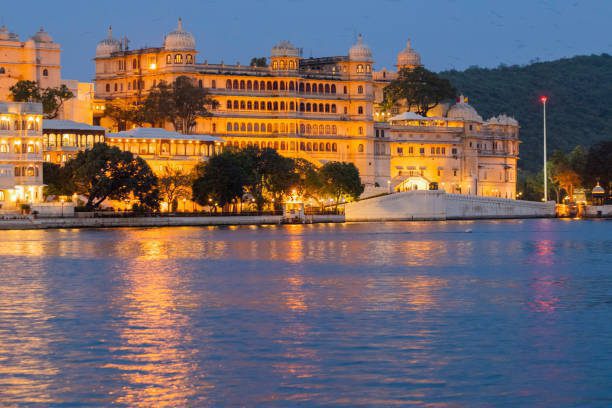
Udaipur is often called the “Venice of the East” because of its beautiful lakes and palaces. The City Palace is the most impressive palace in Udaipur. It’s located on a hill overlooking Lake Pichola and is a mix of Rajasthani and Mughal architecture.
Key Highlights:
- Stunning courtyards, terraces, and gardens
- Scenic boat ride on Lake Pichola
- Explore the mesmerizing Crystal Gallery
Best Time to Visit:
- October to March offers pleasant weather for a comfortable experience.
13. Leh-Ladakh (Jammu & Kashmir)
Why Visit Leh-Ladakh?
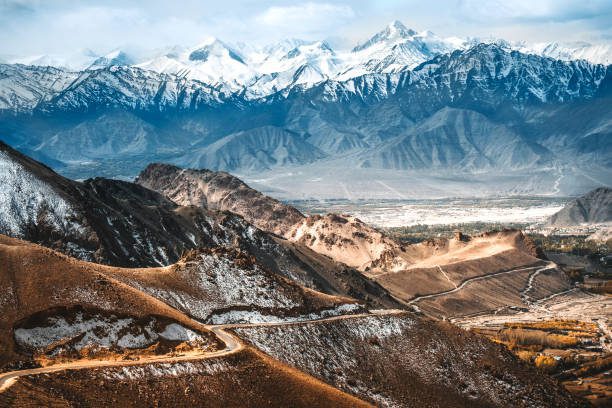
Leh-Ladakh is a beautiful place in India with some of the most amazing landscapes. There are tall, snowy mountains and empty deserts. It’s a great place for people who love adventure and nature. You can go trekking, visit monasteries, and see beautiful lakes.
Key Highlights:
- The breathtaking Pangong Lake
- A thrilling drive through the high-altitude Khardung La Pass
- Explore ancient monasteries like Hemis and Thiksey
Best Time to Visit:
- May to September offers open roads and favorable weather conditions for travel.
14. Khajuraho Temples (Madhya Pradesh)
Why Visit Khajuraho?
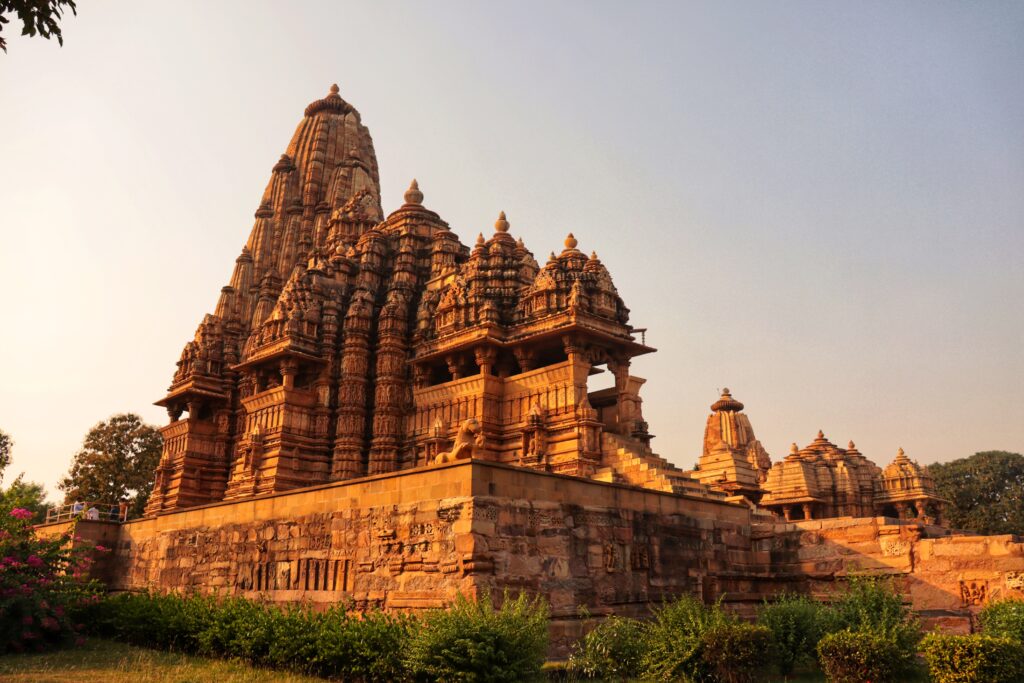
The Khajuraho Temples are a UNESCO World Heritage Site and are known for their beautiful sculptures. The sculptures show people’s everyday lives, as well as more detailed and sensual carvings. These temples are amazing examples of Indian art and culture from the Chandela dynasty.
Key Highlights:
- The magnificent Kandariya Mahadeva Temple
- Intricate carvings depicting dance, music, and daily life
- Experience the Khajuraho Dance Festival
Best Time to Visit:
- October to March offers pleasant weather and avoids the summer heat.
15. Rishikesh (Uttarakhand)
Why Visit Rishikesh?
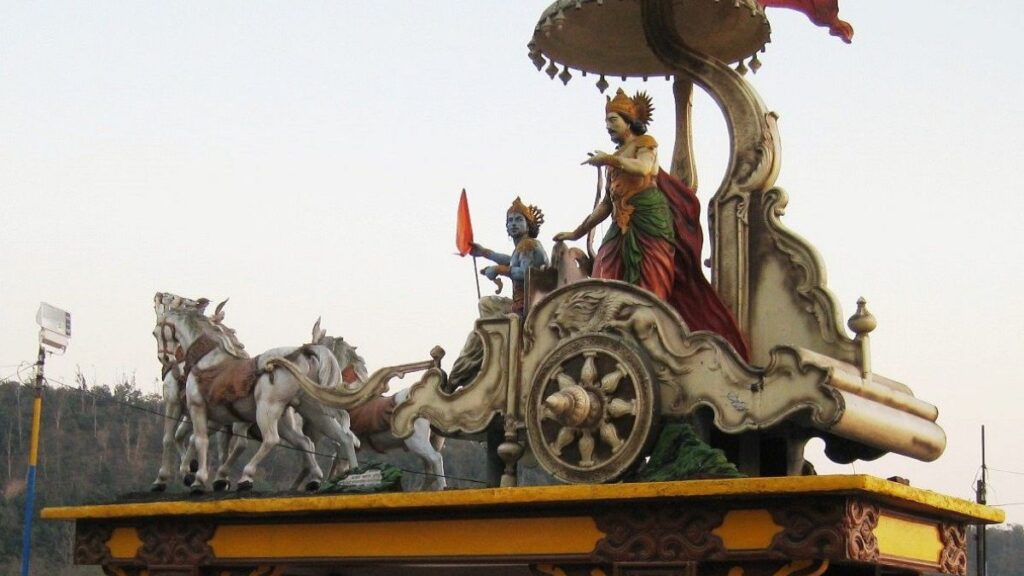
Rishikesh is called the “Yoga Capital of the World” and is a popular place for people who are interested in spirituality and adventure. It’s located on the Ganges River and is famous for its ashrams, meditation retreats, and white-water rafting.
Key Highlights:
- Practice yoga and meditation at renowned ashrams like Parmarth Niketan
- Visit the iconic Laxman Jhula suspension bridge
- Enjoy white-water rafting and camping along the Ganges
Best Time to Visit:
- September to November and March to May offer pleasant weather for outdoor activities.
Conclusion
Immerse yourself in the vibrant tapestry of India! Xplro.com curates the best experiences across this land of extraordinary diversity. Explore ancient ruins and majestic palaces in Rajasthan, find serenity amidst serene temples in South India, or be awestruck by breathtaking natural wonders like the Himalayas. Whether you’re a history buff, nature enthusiast, or spiritual seeker, India’s top tourist attractions, from the iconic Taj Mahal to the mystical Ganges River, promise unforgettable memories. Let Xplro.com be your guide to an incredible Indian adventure!
FAQs
1. What is the best time to visit tourist attractions in India?
- The best time to explore tourist attractions in India typically falls between October and March. This period offers cooler, more comfortable weather, especially for destinations in North and Central India. However, for places like Kerala, the monsoon season offers a unique charm, while the Himalayas are best visited in summer for trekking and outdoor activities.
2. Which is the most famous tourist attraction in India?
- Without a doubt, the Taj Mahal is the most iconic of all tourist attractions in India. Located in Agra, this magnificent white marble mausoleum is known for its beauty, intricate craftsmanship, and historical significance. As one of the Seven Wonders of the World, it draws millions of visitors every year, making it a must-see destination.
3. What should I wear when visiting tourist attractions in India?
- When exploring tourist attractions in India, it’s important to wear modest, comfortable clothing. Lightweight, breathable fabrics are ideal for India’s warm climate, but when visiting religious or sacred sites such as temples and mosques, it’s advisable to cover your arms, legs, and shoulders. Carrying a shawl or scarf is a good practice, as some places may require you to cover your head.
4. Are there entry fees for most tourist attractions in India?
- Yes, many popular tourist attractions in India charge entry fees. The prices vary depending on the site, with places like the Taj Mahal, Amber Fort, and Qutub Minar having different rates for Indian nationals and international visitors. Some religious sites, such as temples and mosques, typically do not charge an entry fee, although donations are often appreciated.
5. Is it safe to visit tourist attractions in India?
- Most tourist attractions in India are safe to visit. However, as with any travel destination, it’s important to stay cautious, especially in crowded places. Keep your belongings secure, be aware of your surroundings, and avoid wandering alone late at night, particularly in isolated areas. Female travelers should take extra precautions, such as traveling in groups or during the daytime, and always being mindful of local customs and practices.
6. What are some family-friendly tourist attractions in India?
- India offers numerous family-friendly destinations. The Backwaters of Kerala are perfect for families looking to experience serene houseboat rides, while Ranthambore National Park offers exciting wildlife safaris suitable for all ages. Goa’s beaches are also ideal for family vacations, offering relaxation and plenty of water activities. Cultural landmarks like the Udaipur City Palace provide educational and enriching experiences for families.
7. What are the best tourist attractions in India for history lovers?
- India is a treasure trove of history and culture. History lovers will find Delhi to be a fascinating destination, with landmarks such as the Red Fort, Humayun’s Tomb, and the Qutub Minar offering glimpses into India’s Mughal past. Agra, home to the Taj Mahal and Agra Fort, is another key destination. The ancient ruins of Hampi and the intricate rock-cut architecture of the Ajanta and Ellora Caves are also highly recommended for those interested in historical exploration.
8. Can I explore tourist attractions in India on a budget?
- Yes, India is a budget-friendly destination, and many tourist attractions in India are affordable or even free to visit. Public transportation options such as trains, buses, and shared taxis make getting around cost-effective. Budget accommodations like guesthouses and hostels are widely available, particularly in tourist-heavy areas. Additionally, many historic sites and temples have low or no entrance fees, making it easier to explore India without breaking the bank.
9. Which tourist attractions in India offer adventure activities?
- For adventure enthusiasts, India offers a variety of exciting experiences at several tourist attractions. Leh-Ladakh and the Himalayas are ideal for trekking, with breathtaking mountain views. Rishikesh is famous for white-water rafting along the Ganges River. Wildlife safaris in Ranthambore National Park allow visitors to see tigers in their natural habitat, while the boulders of Hampi offer a unique rock-climbing experience.
10. What are the best destinations in India for spiritual and wellness tourism?
- India is world-renowned for its spiritual and wellness tourism. Varanasi, with its ancient temples and sacred rituals along the Ganges River, is a hub for spiritual seekers. Rishikesh, the yoga capital of the world, offers countless ashrams and meditation centers for those seeking inner peace. Amritsar’s Golden Temple is another key spiritual destination, offering visitors a tranquil environment for reflection. For wellness, Kerala is famous for its Ayurvedic treatments and serene wellness retreats.
11. How many UNESCO World Heritage Sites are there in India?
- India is home to 40 UNESCO World Heritage Sites, which range from cultural landmarks like the Taj Mahal and the Khajuraho Temples to natural wonders such as Kaziranga National Park and the Western Ghats. These sites showcase the rich cultural and natural diversity that make India a unique and enriching destination for travelers.
12. Should I book tickets in advance for tourist attractions in India?
- It is often advisable to book tickets in advance for popular tourist attractions in India, especially during peak travel seasons. Attractions such as the Taj Mahal and Red Fort can have long queues, and pre-booking your tickets online can save time and ensure entry. For wildlife safaris, advance bookings are a must to secure a spot, particularly in high-demand parks like Ranthambore.






